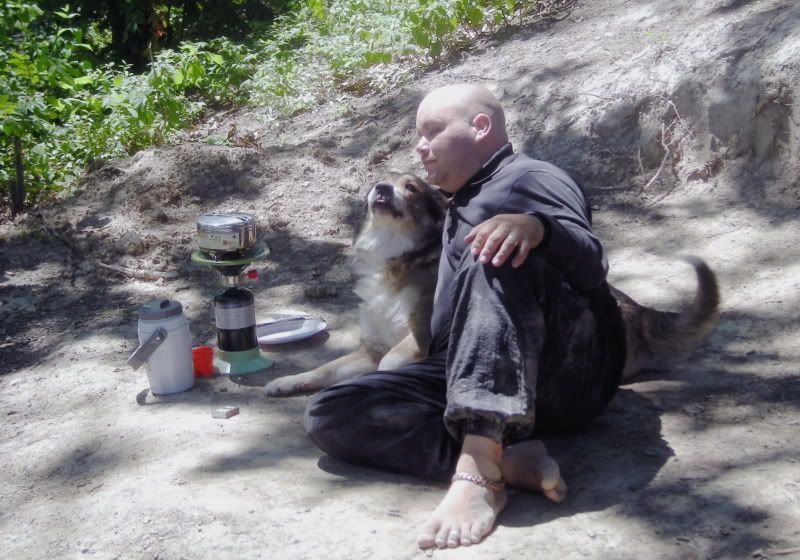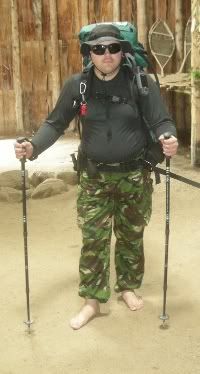10:00 – 16:00
Start: 12:00
Roads: Ice / Snow
Visibility: +10km
Temp: -2C
Area: Eramosa Karst
Vehicle: Black Sunfire
Weather: Overcast
Trail Conditions: Mud / Ice / Snow
Hikers: Wolfmaan, Wolfsgrrl, Deciduous Rockwell, Luka
Plan: Visit the Nexus Cave
GPS: 43.187394 -79.809049
When most people think of Hamilton Ontairo Canada they think of big industries. Steel production being the largest product of the city from companies like Stelco and Dofasco.
What is unbeknownst to most of the residents of the area is that there is a good sized cave system sitting on the top of the Niagara Escarpment, right in the middle of a housing development.
The Niagara Escarpment is a massive ridge of fossil rich sedimentary rock which began its formation 450 million years ago as the outer rim of a shallow sea known geologically as the Michigan Basin, it soars 510 metres at its highest point and stretches 725 km from Niagara to Tobermory. It has a rich mosaic of forests, farms, recreation areas, scenic views, cliffs, streams, wetlands, rolling hills, waterfalls, mineral resources, wildlife habitats, historic sites, villages, towns and cities and includes some of Ontario's best skiing, camping, swimming, fishing, boating, hiking and viewing. The Escarpment is also home to Canada's longest footpath, the Bruce Trail which was established in 1967.
The cave system is well hidden, and was quite difficult for us to find. We rounded the park several times before seeing the parking area, because as noted before – it's in the middle of a housing development. The caves were discovered in 1999 and the Toronto caving group investigated and explored the system and got Canada's outdoor watchdog, the Ministry of Natural Resources involved in a plan to preserve the 32 hectare area.
In 2008 the park was officially recognised as the Eramosa Karst Conservation area by the Hamilton Conservation Authority.
I visited the park on a cold December's day with my partner Wolfsgrrl and fellow adventurer Deciduous Rockwell. We arrived in the area around 11:30 but could not follow the directions we had gotten from the web, and asked a local police officer who stated she had no idea where the park could be located. We resolved to visit an electronics store called Best Buy and use their demonstration computers to have another look at the google maps. Shortly thereafter we arrived at the park using directions cross-reference by a map from Wolfsgrrl.
The park was empty except for a single car and our black sunfire. There cold, windy day was too bleak for most to take to the trails. There were several pavilions with information boards posted on them explaining how important this area is as well as some of the people who helped initially explore the caves and get the park preserved, up and running.
All around us were vast sheets of ice, recent temperature fluctuations had caused the snow to melt and freeze, making the trails a bit challenging for us, although my Husky Luka had no trouble.
We got a small printed map from one of the pavillions, and made our way down the ice and snow covered trails to our first destination which was the Potruff Homestead. The ruins of the homestead were covered in ice and snow and not really visible to us on this particular visit. We continued on to find the Blue Hole. Other than what appeared to be a partially frozen marsh, we could not find the Blue Hole. We passed a marker post which was clearly labelled "Blue Hole" but still could not find anything, we pressed on.
To ensure we were going in the right direction, I took a compass bearing using Deciduous's compass/whistle combination to find we were indeed on the right track and headed towards the Nexus Cave Window.
Arriving at the Nexus Cave Window, we saw a large tree, with a few rocks piled at the base, and a gaping hole in the ground. Upon closer inspection we could see the marker post stating this was the Nexus Cave Window. As we approached we could hear the distinct sound of running water. The entrance was quite large, we approached with caution.
Descending into the cave we could see it was fairly shallow at about 1.5m in depth, and had shallow water maybe 20cm deep flowing through it. We could smell sulphur deposits in the rock, and the distinct earth smell as the cave was not frozen over.
Light penetrated into the opening and we didn't require torches except to examine some of the deeper sections of the cave which had frigid water flowing through them. We decided in the interest of safety not to venture into the cold waters to explore the caves until summer where the temperatures would be slightly warmer and water levels hopefully lower. Someone had discarded a set of red gloves in the cave with the name "Buck" written on them in black indelible marker. We decided to remove them and dispose of them properly.
Deciduous decided to head along an old field line and head on out to visit some of the other sinks and windows in the park. Shortly thereafter we came upon the Stewart Creek Sink and decided to loop back and visit the Nexus Cave entrance.
Arriving at the Nexus Cave entrance we saw what appeared to be two large stone fingers protruding out of the snow covered ground, like that of giant who had lost his fingers to a butchers knife. Between the giant rock fingers lay a large, black hole – the Nexus Cave.
Slowly entering the Nexus cave over the packed snow, again we heard water flowing and the distinct earth smell as we entered the depths of the cave. After a brief inspection we decided to brink Luka into the cave for some huskysploration – a term coined by a Toronto based Urban Explorer with an affinity to huskies.
The primary entrance to the cave was small, again only about 1.5m high, not enough to stand up in, only to crouch and look around. We could see the water flowing into another area of the entrance which would require a belly crawl to pass through. Cold waters and frigid temperatures made us decide to stay as dry as possible, so we could explore the rest of the cave entrances in the park.
Spending some time examining the entrance to the Nexus Cave, we took some photographs and then returned to the surface to take a compass bearing and head back to the Stewart Creek sink, which this time of year was iced over, although we could hear the creek dropping underground to some unknown depths.
Following the snow packed pathways we passed the Potruff Blind Valley and headed to the Potruff cave which even in winter, was impressive on our approach.
The Potruff cave had a beautiful earth smell, and the sound of a gentle waterfall rushing and cascading to some unknown depths. We took some photographs and did our best to stay dry, there didnt' look like any deep cave access here at this point in time, perhaps in summer.
We headed back to the trail passing the Amphitheatre and Potruff Springs, which we could not see due the cold icy blanket of snow which covers the park at this time of year. We rounded the bend and headed back towards the car, where Wolfsgrrl fell on some large boulders and whacked her knee good. The next day she had quite the bruise from her fall.
We stripped off our boots, gaiters, outer shells, backpacks and stored them in the boot and headed back towards the Niagara Region where we came from earlier in the day.
The experience at this park was phenomenal. The cave system which runs through here defiantly warrants a return trip in warm weather with proper caving gear. These caves are small and shouldn't be attempted by anyone without proper caving experience or equipment.
The area is cared for by the "Friends of Eramosa Karst" which is a non-profit organisation dedicated to fighting to keep the area clean, pure, and preserve it for future generations to explore. Although the caves have been designated an Area of Natural and Scientific Interest (ANSI) as well as Environmentally Significant Area (ESA), The biggest challenge they face is to ensure that the water which flows through the caves does not become contaminated and prevent safe exploration.
Eramosa Karst is a great area to visit and enjoy, even if you are not a caver. hopefully enough people will care about the caves to ensure the government of Canada acts to protect this cave system for future generations.

























